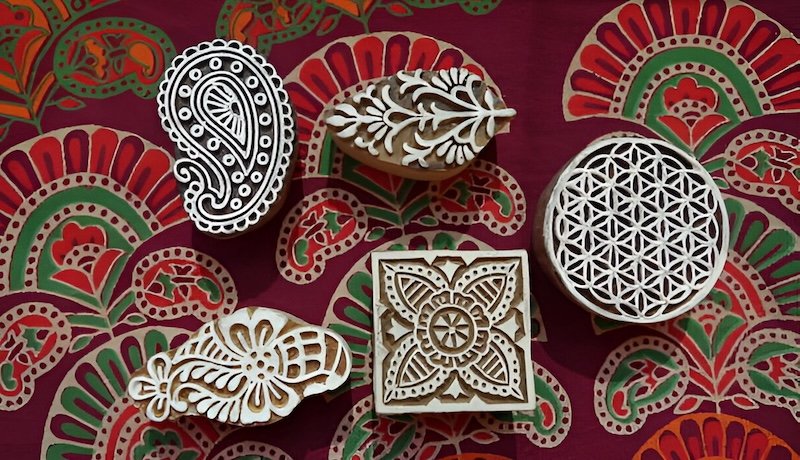Creating The Wooden Blocks For Printing

Block printing in India is a centuries-old craft, with roots tracing back to the Indus Valley Civilization (circa 3500–1300 BCE). Excavations at sites like Mohenjodaro and Harappa have unearthed evidence of printed textiles, indicating the antiquity of this art form.
In Rajasthan, particularly in Jaipur and its neighboring towns like Bagru and Sanganer, block printing flourished under royal patronage during the Mughal era. The Chhipa community, renowned for their expertise in dyeing and printing, have been custodians of this tradition for generations.
Crafting the Wooden Blocks
The creation of wooden blocks is a meticulous process that requires skilled craftsmanship.
1. Wood Selection
- Material: Hardwoods like teak or sheesham are preferred for their durability and fine grain.
- Preparation: The wood is seasoned to prevent warping and ensure longevity.
2. Design Transfer
- Designs, often inspired by nature, geometry, or traditional motifs, are sketched and then transferred onto the wood surface.
3. Carving the Block
- Artisans use chisels and gouges to carve out the design, creating a raised pattern that will hold the dye.
- Each color in a design requires a separate block, meticulously carved to align perfectly with others.
4. Finishing Touches
- The block is sanded to smooth out any rough edges.
- A handle may be attached to the back for ease of stamping.
The Artisans Behind the Craft
In Jaipur, the art of block printing is deeply embedded in the cultural fabric. The Chhipa community, in particular, has been instrumental in preserving and advancing this craft.
These artisans often work in family-run workshops, where skills are passed down through generations. The process is labor-intensive and requires a keen eye for detail, especially when aligning multiple blocks for complex designs.
Traditional vs. Modern Block Making
| Aspect | Traditional Block Making | Modern Techniques |
|---|---|---|
| Material | Teak or sheesham wood | Synthetic materials (e.g., linoleum) |
| Tools Used | Hand tools (chisels, gouges) | Laser cutters, CNC machines |
| Design Transfer | Hand-drawn and manually transferred | Computer-aided design (CAD) |
| Carving Process | Manual carving by artisans | Automated carving |
| Time Required | Several days per block | Few hours per block |
| Cost | Higher due to labor intensity | Lower due to automation |
| Uniqueness | Each block is unique | Mass-produced, less variation |
Sustainability and Cultural Significance
Block printing is not just an art form but also a sustainable practice. Many artisans use natural dyes derived from plants and minerals, reducing environmental impact. Moreover, the craft supports local economies and preserves cultural heritage.Urban JaipurWikipedia
Learn More about block printing
- Block Printing: The History & Craftsmanship of Indian Block Prints
- History of Block Printing: Julia Amory’s Tribute to Jaipur’s Artisans
- Block Printing on Fabrics in India – Introduction, History, Process
How Was it Made? Carving a Printing Block – Video
For a visual demonstration of block carving, you might find this video insightful:
